Share
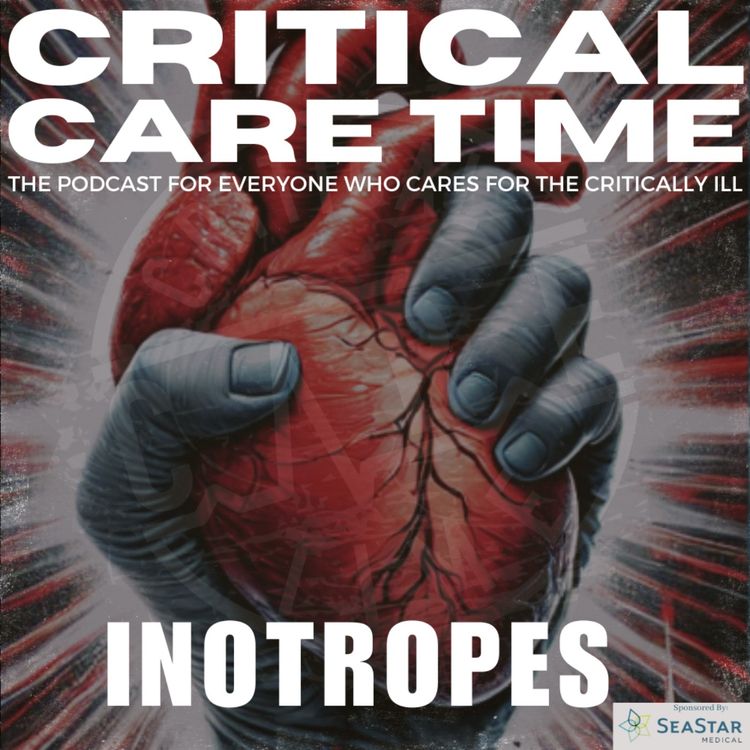
Critical Care Time
36. Inotropes
•
Get excited for a new episode jam-packed with Critical Care goodness! Nick & Cyrus deconstruct, demystify and unpack inotropes. These medications are essential in the world of critical care when we have to manage cardiogenic shock. What are the different inotropes? How can you decide which one is right for your patient? And... what's the difference between an Inotropic and an Ionotropic agent? You'll learn all this and so much more on this week's episode of Critical Care Time: The Podcast for Everyone Who Cares for the Critically Ill!
More episodes
View all episodes

63. Leading in the ICU… and Beyond!
01:12:53|The importance of leadership in the hospital setting is critically important yet often overlooked. It’s even more important to have sound leaders and adhere to well-founded leadership practices when taking care of the critically ill. Join us as we sit down with Dr. Josh Hartzell - internist, infectious disease physician, author, veteran and physician-leader - as we discuss Leading in the ICU and Beyond!As always, please leave us feedback and let us know what you think!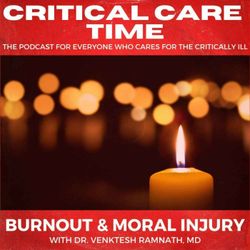
62. Burnout & Moral Injury
01:20:59|For those who work in an ICU - or with any patients for that matter -the concepts of burnout and moral injury are no stranger. In order to mitigate the effects of these forces, it’s important to understand them. Join Nick and Cyrus, as they sit down with an incredible guest, Dr. Venktesh Ramnath, with the hopes of doing just that. On this episode we step away from the pressors and central lines and focus on the contributors to burn out and moral injury in the medical field while developing some strategies to combat them. Listen, watch, learn and let us know what you think!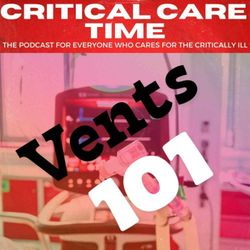
61. Vents 101
01:40:20|Join Cyrus & Nick as the FINALLY tackle mechanical ventilation. In this episode - first of many we suspect - we lay the foundations for mechanical ventilation. If you stick with us through this one you'll come away with a great introduction to vents to include why we use them, what we adjust, and about a number of the primary vent modes you'll likely seen in your ICU. We've got something for everyone with this episode so please give it a listen and let us know what you think!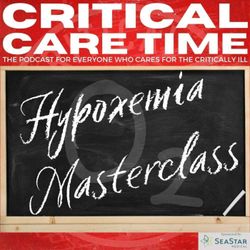
Reboot - Hypoxemia Masterclass
01:07:51|Join Nick and Cyrus as they teach a master class on hypoxemia for everyone and anyone who is ICU adjacent! We discuss why oxygen is so crucial, share some very interesting animal physiology and - perhaps most importantly- discuss the 6 causes of hypoxemia you MUST know… and what you can do about them! Take a listen, let us know what you think, and leave us a review!
60. Journal Club: Should We Save The Right IJ?
31:20|This week on Critical Care Time, Nick & Cyrus discuss the recent article in the Journal of Critical Care titled “Impact of initial jugular vein insertion site selection for central venous catheter placement on hemodialysis catheter complications.” Is this bunk or is this practice changing? Did they select the right population for this study or is the question they asked and answered... maybe not such a great question? We'll cover all this and more during this week's episode! Please take a listen, react, reach out & as always - don't forget to leave a review!
59. Airway Controversies with Dr. Jarrod Mosier, MD
01:40:53|Join us this week on Critical Care Time as we take on Airway Controversies with Dr. Jarrod Mosier - course director for The Difficult Airway Course: Critical Care! We talk induction agents, pre-oxygenation and cover so much more in this episode!If you love this - consider attending the upcoming Difficult Airway Course at the Manchester Grand Hyatt in sunny San Diego, California from November 14th to the 16th and use our Discount Code CCTIME25 at checkout and save $250!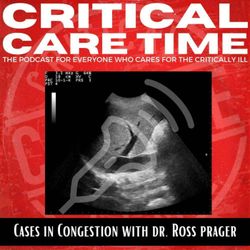
58. Cases in Congestion with Dr Ross Prager
32:55|On this mini-sode, Cyrus & Nick are once again joined by Dr. Prager as they follow up on last week's episode with some cases & practical pearls to really hammer home some of the points previously discussed. Here we look at practical uses for the volume assessment tools discussed in our prior show, along with some commentary on when such assessments may or may not be warranted. This is a great, practical, rubber-meets-the-road episode for folks looking for a quick review/refresher. Listen and let us know what you think!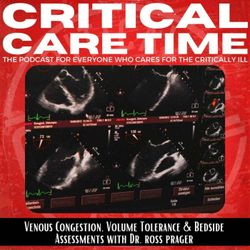
57. Venous Congestion, Volume Tolerance and Bedside Assessments
01:19:58|What is the microcirculation? How are terms like volume-status and fluid-responsiveness misleading? Join us as we sit down with Dr. Ross Prager to unpack and de-mystify the concepts of congestion and volume tolerance along with our survey of the tools of the trade as it relates to these terms. On this Critical Care Time episode we really get into the weeds on this stuff and even get theoretical at some points so it's NOT for the faint of heart! However, if you listen to us for the deep dives into physiology and if you want to level-up your ICU patient care, this is the episode for you! Listen, leave us some feedback and drop us a review!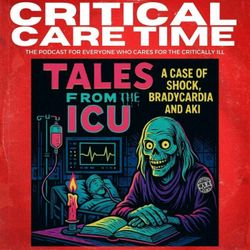
56. Tales from the ICU: BRASH Syndrome
49:34|This week, Nick & Cyrus try something a little different with Tales from the ICU. Here, we explore clinical reasoning in the ICU in the context of a mystery case! Don't worry, we'll reveal the diagnosis and go through all the pitfalls, pearls and pathophysiology! This way, you get to play along for a while AND learn some cool medicine. As this is a new episode format, PLEASE leave us feedback and let us know if you like it or if we should send this one to the crypt!